Welcome to our explainer series, taking important topics and going deeper!
What is the Electricity Grid?
The Electricity Grid is a crucial part of our daily lives, yet few people know what it is and how it works. The grid powers our homes, schools, facilities, and buildings and does this every minute of every day. However, it is quickly becoming outdated, not only because it was built decades ago and designed to receive power from energy sources like coal and natural gas but also because of the ever-growing demand for electricity.
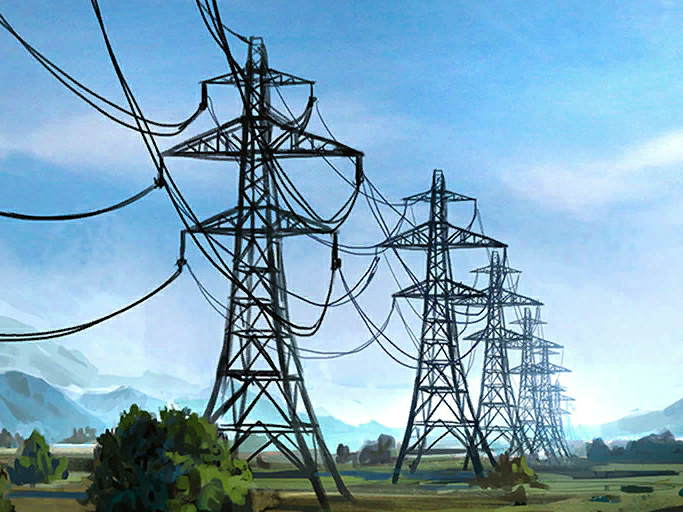
How does it work?
The power grid has four major parts. 1
- Generation: Individual generators include various facilities, like coal and natural gas burning plants, hydroelectric dams, nuclear power plants, wind turbines, and solar panels. These are all very different technologies and function differently. For example, wind and solar are extremely variable, meaning the amount of power available at any given time is fluctuating unlike more constant sources of power like geothermal, and their fuel is free. Thus, these energy sources are used whenever they are available. Natural gas-fired power plants can meet peak demand due to how quickly the electricity can be ramped up, in contrast to coal and nuclear power, which take more time to adjust their electricity output.
- Transmission: Transmission lines bring the electricity from the source to where it is needed, like your house or office. These lines carry the high-voltage electricity and ramp up or down the electricity from the plants to the distribution network to reach consumers. The transmission system also includes transformers, substations, breakers, and switches.
- Distribution: The distribution network is the wires bringing the electricity from the transmission lines to the consumers and is regulated by the state.
- Consumption: Finally, the consumer use, or “load,” is where the transmission grid ends. This is when we use the electricity, whether turning on the lights or running the washing machine. Demand varies throughout the day, but it is still constant, making management of the grid a serious consideration.
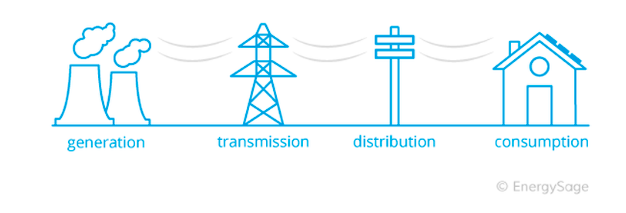
Where does it come from?
Now, there are three major interconnections, or grids, that cover the contiguous states—Western, Texas, and the Eastern Interconnections, which all operate with very little overlap.
Within that, electricity markets in the US have retail and wholesale markets, with the latter involving selling electricity to utilities and traders, who then sell to consumers. Because of the nature of the industry and the huge investments required for construction and distribution, energy utilities have a monopoly over a local market. Their mandate to provide electricity as a public good is enforced either by publicly-owned energy utilities or, more often, strict and heavy regulation on the costs to consumers.
Our wholesale electricity market is PJM, and the bulk of our energy comes from gas, nuclear, and coal.2
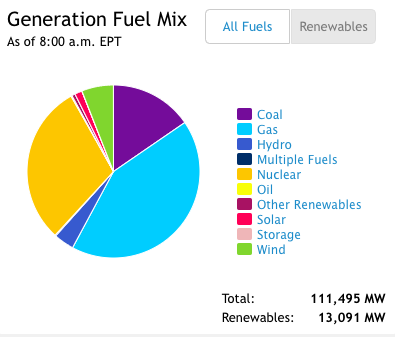
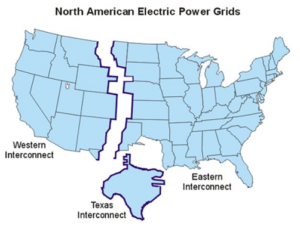
Why do we need to update the grid?
Because the grid was built so long ago, it was designed with less sustainable energy sources in mind, namely natural gas. There are many newer and better options now, but we must upgrade the grid to stop relying heavily on natural gas to power our lives. With the outdated system, climate change, and extreme weather events, the risk of power blackouts is increasing, as widespread blackouts can occur if even just a few parts of the grid fail.
It’s also a major part of reaching the country’s climate goals, which cannot be achieved without decarbonization. Continuing to rely on coal and natural gas and burning fossil fuels will increase our already too-high emissions of greenhouse gasses. Electrification, one of the most efficient ways to cut emissions, will require an overhaul of the grid to make it clean and reliable.3
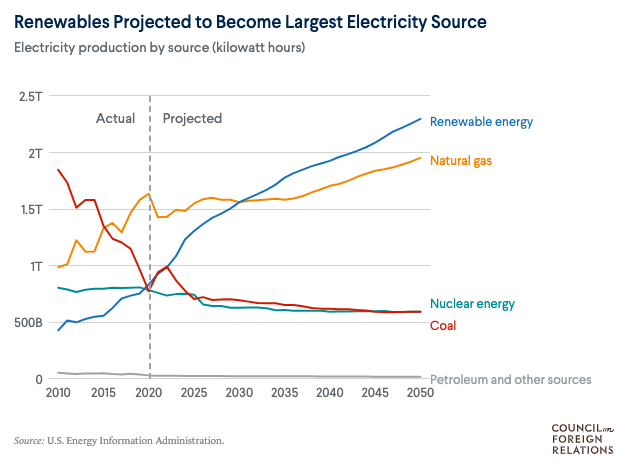
Why do we need to update the grid?
Increasing the use of renewable energy is possible, and it is already happening; however, the US also needs to expand the technology and infrastructure required to support it. Long-distance and high-capacity transmission lines can bring clean energy nationwide, especially from sunnier and windier regions to bigger cities with high energy demand. At the moment, renewable energies are a challenge for the grid because of factors such as the variability of sunlight and wind.
Additionally, storing wind and solar energy is critical in ensuring power is always available, even in major weather events, the frequency and intensity of which are predicted to rise with the effects of climate change. Having microgrids can help bolster the security and reliability of electricity by having an isolated grid that can continue functioning should anything happen to the macrogrid.
It will still be difficult not only in the physical sense of needing lots of pricey construction required to update the grid and transmission lines, etc. But there are also the hurdles of getting permits to build and renew, which, aside from taking time, will be resisted heavily by states and localities. Legislation such as the Bipartisan Infrastructure Law and the Inflation Reduction Act include a lot of ambitious goals and tax incentives; however, it is a matter of making them accessible and understandable.5
The grid is a system that has remained largely unchanged for decades, and therefore, upgrading it almost completely is a grand task.
What can you do?
The cleanest energy is the energy that is not used. Make your home more energy efficient! If you can install rooftop solar panels, any excess power you generate will get sent back to the grid. If that is not currently a possibility, you can invest in clean energy and save money when you subscribe to a community solar project. We have many more resources here on our website!
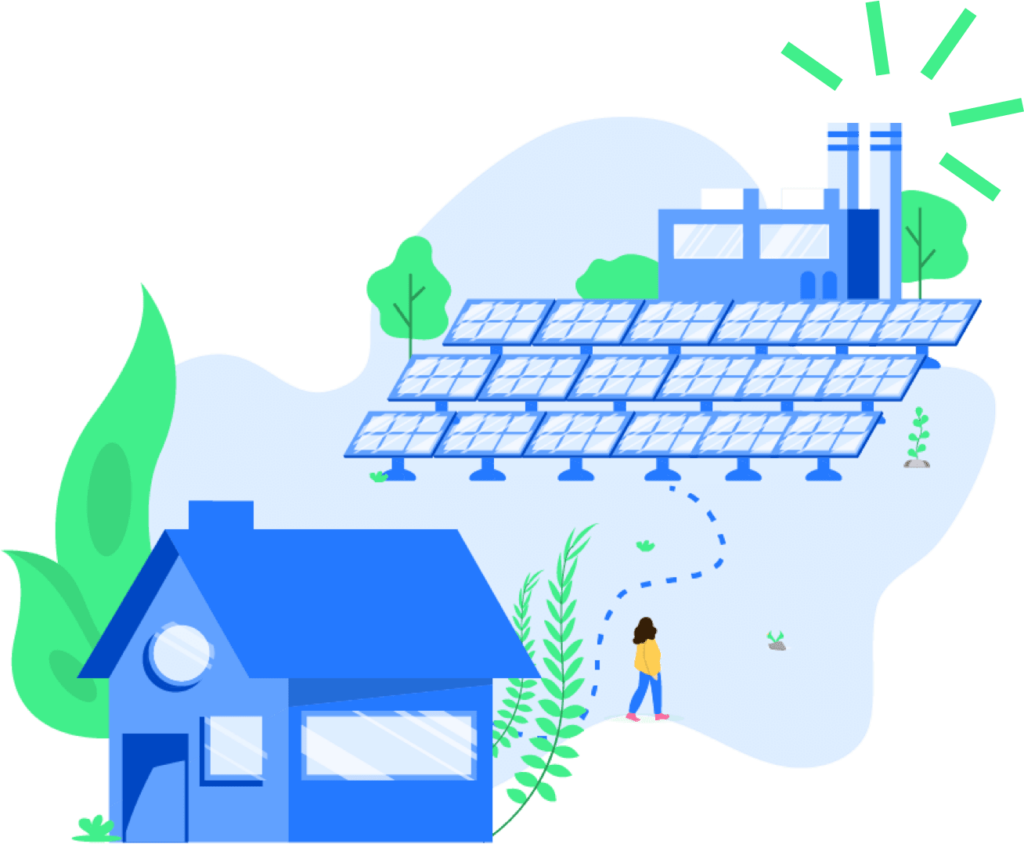
Stay tuned for more!
We will be sharing our explainers every month. If there are topics you’d like to know more about, please email info@sustainableprinceton.org.
- https://www.ucsusa.org/resources/how-electricity-grid-works ↩︎
- https://www.pjm.com/markets-and-operations.aspx ↩︎
- https://www.cfr.org/backgrounder/how-does-us-power-grid-work ↩︎
- https://www.cfr.org/backgrounder/how-does-us-power-grid-work ↩︎
- https://www.ucsusa.org/resources/lets-upgrade-electricity-grid ↩︎




